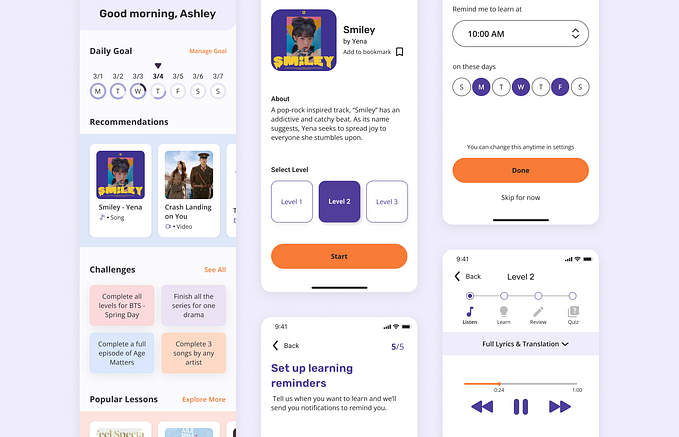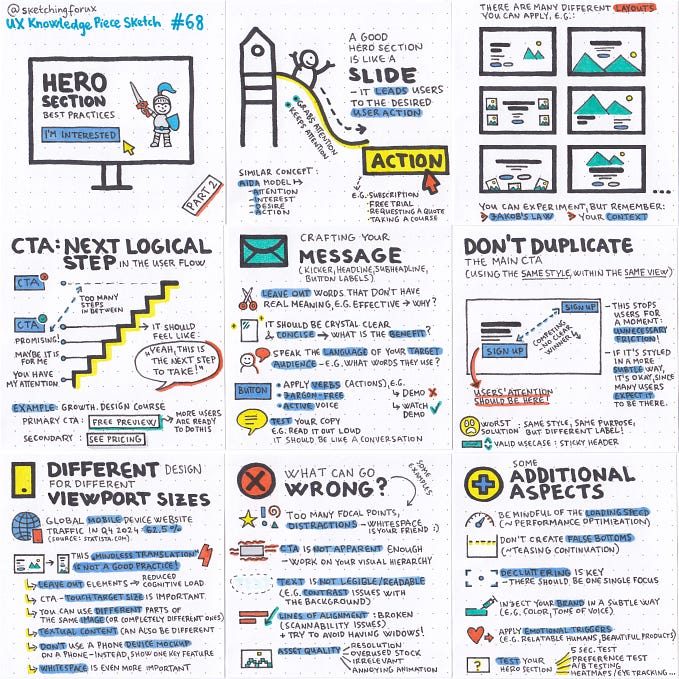5 Things a UX Writer Does
Whether you’re an aspiring UX designer or an experienced one, there are a number of career paths to choose from within the UX industry, and UX writer is one of the most exciting directions. UX writers create the corresponding copy that goes along with design, cultivating meaningful conversations between the user and the product or service. The copy, or text that a user interacts with when using a product or service, can be anything from an error message or call-to-action button (microcopy), to comprehensive instructions-for-use.
If you’re interested in becoming a UX writer, keep reading to learn about 5 things a UX writer does to craft amazing, user-friendly copy as part of a collaborative design team.
1. Conduct User and Market Research
Conducting research is all about understanding your target audience: how they speak, what they’re interested in, who they are, what their pain points are, how they use a product, and more. Essentially, you want to foster empathy with your target user and research helps guide you toward crafting an empathetic approach.

As a UX writer, you will conduct some research on your own and may also collaborate with a UX researcher on certain projects. The research process for UX writers may include such methods as:
- User interviews: Asking individual users about a specific topic, application, product, or service.
- Contextual inquiry: Observations and interviews that assess users as they interact with a product in their environment.
2. Analyze Copy and Brand Voice
If you’re working with a product or service that already exists, you can analyze existing copy to find opportunities for improvement. This may include looking at metrics like daily sessions, goal completion rates, time-on-page, click-through-rates (CTR) and more.
You will also ensure that copy aligns with the brand’s voice, style, and tone at every step in the user journey, from the smallest bits of microcopy, to more robust copy.
If you are working with a team to develop a new product or service, and there is not existing copy, you have the opportunity to conduct competitor research and market analysis.
Armed with the user research about your target audience, you can pinpoint competitors who are also targeting those specific users. Look for commonalities amongst your competitors, particularly in their copy, like the specific words, phrases, and tone they use, to inform both the overall design and copy.
Competitor research will also help you identify gaps in information and copy so that you can create a UX writing strategy that fills those gaps, offering more value to your target audience.
Additionally, you may conduct market analysis to see how similar products or services are being used and discussed. This can help you create UX copy that reaches your target audience based on their unique needs and problems, focusing on empathy to engage users, while aligning with the broader market your product or service is in.

3. Define UX Writing Strategy
Ultimately, the copy you write is intended to easily guide the user through their journey while remaining on-brand. To do this effectively, you need a solid UX writing strategy.
When developing a UX writing strategy, it’s important to focus on the specific goals of the project you’re working on. UX writing goals are only relevant in the context of a particular project as each client will have different needs, which requires a unique perspective. For example, if the goal of your project is to minimize user dropout during an onboarding process, you’ll want to write copy that keeps users engaged, is easy to follow, and is in line with the overall design. Is the copy making it easier or more difficult for the user?

You also need to consider the type of product you’re writing for (website, app, chatbot, etc.) to determine how much copy is needed, how it will be formatted, and the style. Use wireframe tools to design layouts and understand how your copy fits into them.
4. Write UX Copy
Using the strategy created, you can begin writing. Based on the interface and goals, you may write microcopy, which are the shorter, meaningful snippets of copy that help a user complete a task, like a CTA or signup button; or macrocopy, which focuses more on the overall tone and voice and is woven throughout the content.
For both, you need to have a complete understanding of the brand, the user, and the product to write effective copy, in addition to working closely with the design team to assess how the copy will function with the design.

5. Validate UX Copy
Validating UX copy involves good usability testing, which is determined by the scope of a specific project. The defined testing methods will help a UX writer understand how the copy works for users, giving insight on revisions for optimal usability.
Before validating UX copy with usability tests, make sure you have a strong understanding of the target audience, ample resources to conduct tests, and clearly define research objectives. With this information, you can choose the best testing methods and ask the most relevant questions.
The following are examples of usability testing a UX writer and their team may conduct:
- Moderated usability testing: Conducted with a moderator or facilitator on-site (in a lab) or remotely.
- Unmoderated, remote usability testing: Conducted by a user in their own environment, which lets the user interact with product more naturally. Use session recording to capture a user’s actions when using a product.
Conclusion
Writing useful, impactful text, no matter how short or long, is an art, one that is mastered by a UX writer. UX writing is a challenging, yet rewarding career path in UX design, with plenty of potential for growth, especially as you learn the ins and outs of what UX writer does and how to effectively collaborate with your team.
About the author
Kelly Doran is a Senior Content Writer at Neil Patel Digital who is passionate about helping brands tell their stories. Her extensive experience includes writing and editing high-quality content for enterprise organizations in technical, lifestyle, and regulated industries, with special focus on copywriting.











